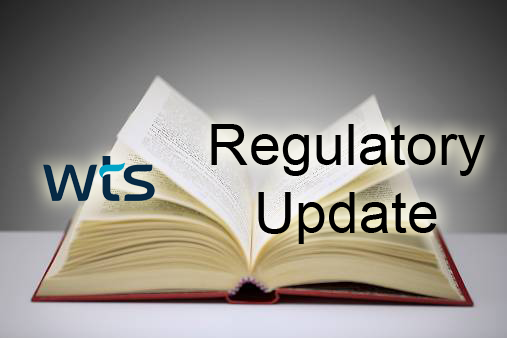June 2018
As a reminder – a large number of the requirements of the Generator Improvement Rule from last year go into effect on JULY 1st of this year. The rule contained elements that were both more stringent then current rules and less stringent then current rules. All states are required to adopt the more stringent portions of the rule by July 1 2018 (or July 1, 2019, if the state regulatory process includes a legislative step). Follows a summary of impacts on generators of Hazardous Waste under the new rule:
- Satellite accumulation area:Require that hazardous wastes not be mixed or placed in a container with other hazardous wastes that are incompatible. Allow containers to remain open temporarily under limited circumstances, when necessary for safe operations. Provided maximum weight in addition to volume for acute hazardous waste limit. Clarified that ”three days” means three consecutive calendar days for when waste must be moved to central accumulation area or permitted TSDF. Rescinded memo allowing reactive hazardous waste to be stored away from the point of generation. Made marking and labeling requirements consistent with central accumulation areas.
- Hazardous waste in a satellite accumulation area is subject to preparedness and prevention and the contingency plan.Emergency preparedness and prevention provisions under RCRA apply to areas where hazardous waste is generated and accumulated. This includes satellite accumulation areas and central accumulation areas, which both have to be covered by the contingency plan.
- Labeling and marking of hazardous waste accumulation areas.Container and tank labels must now also indicate the hazards of the contents of the containers. Flexibility in how to comply with this new provision; can indicate the hazards of the contents of the container using any of several established methods (e.g., DOT hazard communication, OSHA hazard statement or pictogram, NFPA chemical hazard label, or RCRA characteristic by name) For drip pads and containment buildings, the generator can keep this information in logs or records near the accumulation unit. NOTE: EPA WASTE NUMBERS (i.e. D001, F003, etc.) DO NOT SUFFICE.
- Labeling and marking of hazardous waste containers prior to off-site transportation.Prior to sending hazardous waste off-site to a TSDF, generators must mark their containers with the applicable RCRA waste codes or use a bar-coding system that performs the same function.
- Generator accumulating hazardous wastes in tanks must demonstrate that the tank has been emptied or all the waste has been turned over since first entering the tank (accumulation time limits).Use inventory logs, monitoring equipment or other records to demonstrate that for:
- Batch process: Tank has been emptied every 90 or 180 days.
- Continuous flow process: Estimated volumes of hazardous waste entering tank daily exit the tank within 90 or 180 days of first entering.
- A Large Quantity Generator (LQG) must submit biennial report for all hazardous waste generated in a reporting year.LQGs must report all hazardous waste generated and managed on-site in reporting year; LQGs that generate and manage hazardous wastes off-site must follow existing BR guidance LQGs must report hazardous wastes generated throughout the calendar year, even for months when they are an SQG.
- An LQG updating its contingency plan must include a ‘Quick Reference Guide’. New large quantity generators must submit the quick reference guide when they submit their contingency plan to local emergency responders.A large quantity generator in operation when the regulations went into effect on May 30, 2017, must submit a Quick Reference Guide at the time they next submit a revised contingency plan to local responders due to other necessary revisions. The Quick Reference Guide includes eight elements that are critical to local responders when an emergency is occurring at a facility:
- The types and names of the hazardous wastes on site and their hazard in layman’s terms (e.g., toxic paint wastes, spent ignitable solvents);
- An estimated maximum amount of each hazardous waste on site at any one time;
- The identification of any hazardous waste that would require unique or special treatment by medical staff in the event of exposure;
- A map of the facility identifying where hazardous waste may be located;
- A street map of the facility in relation to surrounding businesses, residences, and schools;
- The location of the water supply;
- Information about any on-site notification systems to communicate with people at the facility; and
- The name of an emergency coordinator available at any time.
- An LQG must notify USEPA or state of planned facility closure including a central accumulation area (90 day accumulation area).A large quantity generator may choose one of the following two options to ensure that upon closure this accumulation area will be identified as a former accumulation area for hazardous waste:
- Place a notice in the operating record within 30 days after closing the waste accumulation unit that identifies the units location within the facility. Applicable closure performance standards can then be addressed later when the entire facility closes. If necessary, the notice can be removed from the operating record at any point before closing the facility if the waste accumulation unit is put back into service. This is the option we expect most large quantity generators will choose to employ; or
- Notify the regional EPA Administrator no later than 90 days after closing the unit. The large quantity generator should have met the closure performance standards in 40 CFR section 262.17(a)(8)(iii) on or before the date they submit the 90-day notification. If a large quantity generator needs longer than 90 days to comply with the closure performance standards, they must submit an extension request to the Administrator no later than 75 days after closure.

